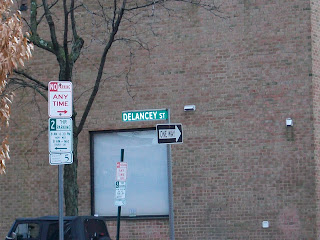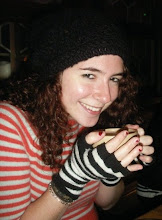A recent “Getting By” started at the museum’s red-bricked building at 97 Orchard St. Visitors introduced themselves as being from Baltimore, Philadelphia, and London. Some had ancestors from Russia and Poland: Ashkenazi Jews who all immigrated to America. First the group talked about what life must have been like for great-grandparents. Then, everyone went off to the preserved apartments of the museum.
The 150-year-old tenement building showcases snapshots of immigrant life in apartments from two different time periods – 1870, with German Jewish residents, and 1930 with Italian Catholics. During the walk-through, Steinberg continually posed questions to the group.
“The Baldizzis were illegal, but received welfare from the city,” he said. “Do you think they should have received government help? What about immigrants in the same situation today?”
Lokki Chan, the museum’s Education Associate for Program Coordination, and a manager of “Getting By,” talked about the program’s relevance today.
“According to the 2006 American Community Survey, immigrants and their children now account for more than 60 percent of New York City’s population, the highest portion of the city’s population comprised by immigrants since 1901,” she said. “The need for building understanding among people of vastly different backgrounds is more urgent than ever.”
Engaging the group has always been a staple of the Tenement Museum. But on Oct. 29, it started the two-hour long, daily program “Getting By” as a revamping of its “Kitchen Conversations”, an optional visitor and educator discussion post-tour.
Now, “Getting By” offers in-depth discussion throughout the tour, and a mandatory roundtable discussion with the same educator afterward.
When “Kitchen Conversations” was receiving mixed feedback, the museum introduced “Getting By” to facilitate an easier transition from tour to talking. “After the tour, people would become uncomfortable and leave rather than stay and talk,” said Steinberg. “Now, with open-ended discussions integrated into the tour, feedback is excellent.”
“It was more like taking a short course than a museum tour, “ said David Solomons, a visitor from Sunday’s group who had Jewish ancestors living in London’s West End.
After the tour of the apartments, the group returned to the front room and sat around a table for oolong tea, cookies, and a post-visit chat.
“I got to speculate what my ancestors experienced coming from Europe, and what they had to deal with,” said Peter Swanson, a graduate student from Oregon.
“Learning with experience seems the most effective way, and this tour was experiential,” Solomons said. “It was very fulfilling and enjoyable.”

















